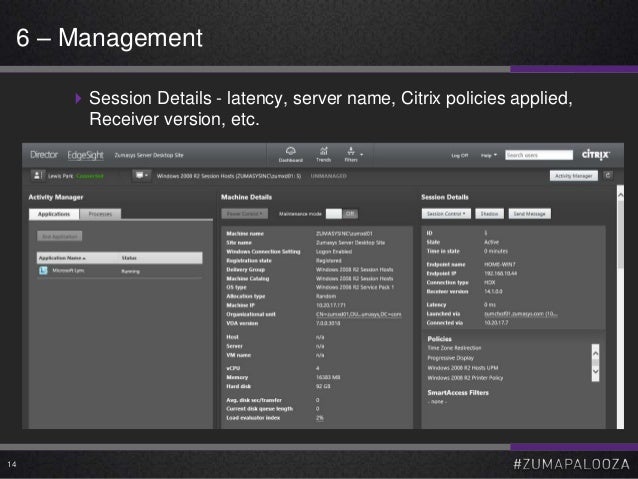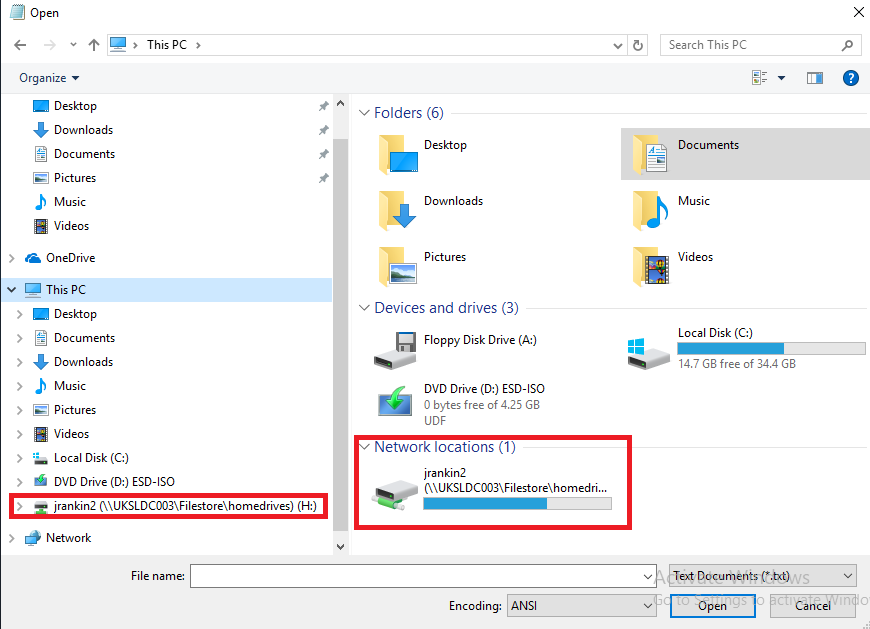Citrix Receiver Slow
Organizations now have staff working from home all over the country, and staff depending on remote technology could be using either their personal devices, or corporate laptops. To support this shift, Citrix Gateway could be configured within the organization’s private or public cloud to allow for secure remote access to virtual applications and desktops. WithCitrix Gateway acting as an ICA proxy, staff may be allowed by the organization to use their personal computers, laptops, or tablets such as an iPad.
- Citrix Receiver For Windows 7
- Citrix Receiver Desktop
- Citrix Receiver Connection Issues
- Citrix Receiver Slow Logon
- Citrix Receiver Slow Screen Refresh

Other organizations may use the Citrix Gateway for VPN access, and have staff again use their corporate devices, or personal devices subject to posture checking.
IT loses visibility and control
These technologies such as VPN and ICA proxy are great at allowing efficient remote working, however, there are more external factors introduced with remote working that can impact the end-user experience. We now have staff connecting into our datacenters from a range of different internet connections, from 3G, 4G, Wi-Fi hotspots and broadband. This is something corporate IT can’t control.
Slow App Enumeration in StoreFront 3.0 with Receiver 4.3. This article is intended for Citrix. The easiest way to do this is to add all the applications to the. Edit: I was referring to Citrix Workspace sorry. I am using Citrix receiver in Windows 10. I have a pretty decent internet service, but my connection once im logged in to Citrix is painfully slow. I am using Mcafee as a Firewall, and access seems to be allowed. Net Guard is active doh.
Further to this, if staff are likely using their personal devices to connect in, those devices in some instances could be the latest and greatest Windows 10 or Apple devices that are fully patched running the latest versions of web browsers and Citrix Workspace app. This is often only a very small percentage of the userbase though, as most devices will run a mixture of operating systems from Windows 10 to Windows 7, and older macOS versions that have not been updated in 3-4 years. I often find these devices also running unsupported versions of Citrix Receiver that simply haven’t been updated since they were initially installed.

Staff still expect that if they can connect to their virtual apps and desktops, that the performance they receive is similar to what they were used to when working from the office. That is, minimal lag, a responsive application that also launches quickly, and is available whenever they need it.
The rise of multimedia
Audio and video technologies such as Zoom and Teams have become much more popular due to the pandemic and staff working remotely. People need to stay in touch daily, from having meetings regarding ongoing projects or simply keeping in touch to prevent feeling isolated.
Usage of Teams has more than doubled in recent months, with now over 70 million active users using it around the world. Bandwidth consumption can range from 30kbps to over 1Mbps depending on if you are audio calling or in a group video call.
It is important to keep in mind that thesemultimedia platforms do have the ability to consume more of your available bandwidth, and for those staff members who have lower quality broadband in the home, there could be bandwidth contention with your virtual apps and desktop sessions. I should also mention the fact that if you have other members in your household streaming or playing online games from a range of devices, those activities will further add to the bandwidth contention of your home broadband.
Citrix Receiver For Windows 7
The remote worker, returning to the office
Since the initial months of the pandemic, some restrictions are being lifted across different countries and people are allowed to return back to the office, though often in limited numbers.
Some staff are also returning to the office on a part-time basis, but the change of toolsets has created a potential new problem. All these multimedia applications such as Zoom and Microsoft Teams that were adopted for keeping connected will continue to be used even as staff return to the office. Because of this, what starts to happen is that gradually a much higher demand is placed on the office network. The more people that return, the higher the bandwidth utilization is likely to be, higher than ever before.
Users will still also obviously continue to launch their virtual apps and desktops whilst in the office, but with the much higher bandwidth contention with peers, the ICA channels could be impacted, causing slow application launches, slow in-session performance and so on.
Ultimately, the risk of tickets reaching the desk for “Citrix is slow” problems may be more common.
Pinpointing the slowness

From an IT perspective, Citrix admins need to be able to pinpoint where the slowness is coming from when anend-user reports that “Citrix is slow” from the office or remote. Is it the home network the user is connected from, the user’s personal device, the entire corporate office, or something in the datacenter with the Citrix VDAs?
For example, it could be the end-users home network due to household members using Wi-Fi for streaming and playing video games, leading to bandwidth contention which is impacting the end-users ICA session to their virtual apps and desktops.
On the other hand, it could be that the end-user’s personal device is running poorly. Maybe it is running on quite old hardware, or there has been a lot of third-party software installed on the device which is causing high RAM or CPU utilisation. Such problems can impact the launching and in-session ICA performance, however the end-user may report to the helpdesk that Citrix is slow, not knowing that it is caused by their own device. This leads IT down the wrong path from the beginning.
Citrix Receiver Desktop
Also, staff may now be reporting slowness after a return to the office, with the usage of Zoom and Teams still high, because the network infrastructure was not designed for the larger amount of traffic end-users are now pushing through it.
IT needs purpose-built monitoring tools to help pinpoint where the issue lies and to quickly rule out if the issue is not with Citrix at all.
How ICA channel, network, and latency monitoring can help
A purpose-built monitoring tool that can monitor each of the individual ICA channels, the end-user’s network, and latency is a powerful solution to have at your disposal.Goliath Performance Monitor, for example, has such ability to monitor each channel and you can be selective about what channel to investigate when troubleshooting.
In the below example, an end user reported that their session became slow suddenly and wanted to know what happened. Upon review, we can see that the end user experienced a sudden spike in network latency, which caused the ICA latency to jump up.
At the same time, we were able to see that the user’s connection speed dropped simultaneously, which we can correlate to the sudden spike in network latency. Obviously, something happened on the end-users network at that time to cause a drop, which could have been a burst in demand for available bandwidth or just temporary slowness from any of the hops coming into the organization’s datacenter.
Finally, in this example, an end user similar to the scenario before encountered a sudden spike in ICA RTT latency, but this time it was not actually anything user-side which caused the problem.

Upon comparing the VDA CPU utilization the end user was connected to at the time, we can see the CPU usage increase for a period of time that matches when the ICA RTT latency jumped. This eliminates any doubt over the end-user connection, which can also be tracked under Network Latency and appears to be very stable throughout.
Summary
Remote working, and higher usage of multimedia solutions are here to stay. What that also means is troubleshooting slow session and end-user experience issues is not going away any time soon.

Luckily, there are solutions out there that can help assist and guide Citrix admins to typical “Citrix is slow” resolutions so that you don’t spend any extra time troubleshooting, especially when you cannot see the full picture for those users remotely connecting from various internet links and from personal devices.
As you can see from these examples, with actual data-driven proof you can quickly isolate root cause, have your users back up and running quicker and spend less time troubleshooting end-user problems.
Citrix Receiver Connection Issues
To learn more about how to troubleshoot “Citrix is Slow” by understanding data from ICA/HDX protocol, check out thisTechnical Guide to Citrix ICA/HDXsponsored by Goliath Technologies.
Citrix Receiver Slow Logon
This post was originally published onJGSpiers.com.
George Spiers
Citrix Receiver Slow Screen Refresh
Continue Your Research on How to Troubleshoot Citrix is Slow Complaints
